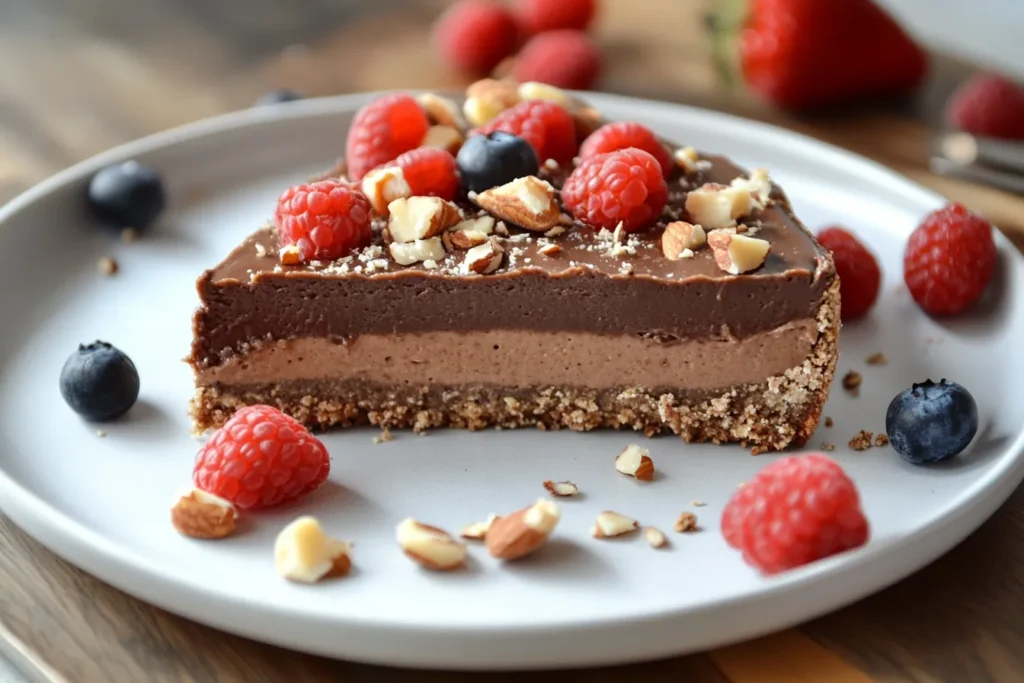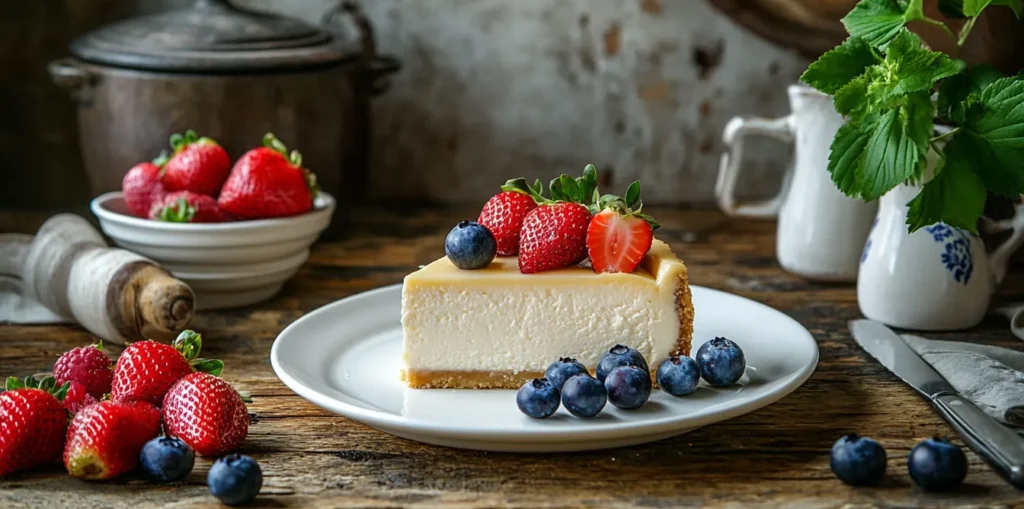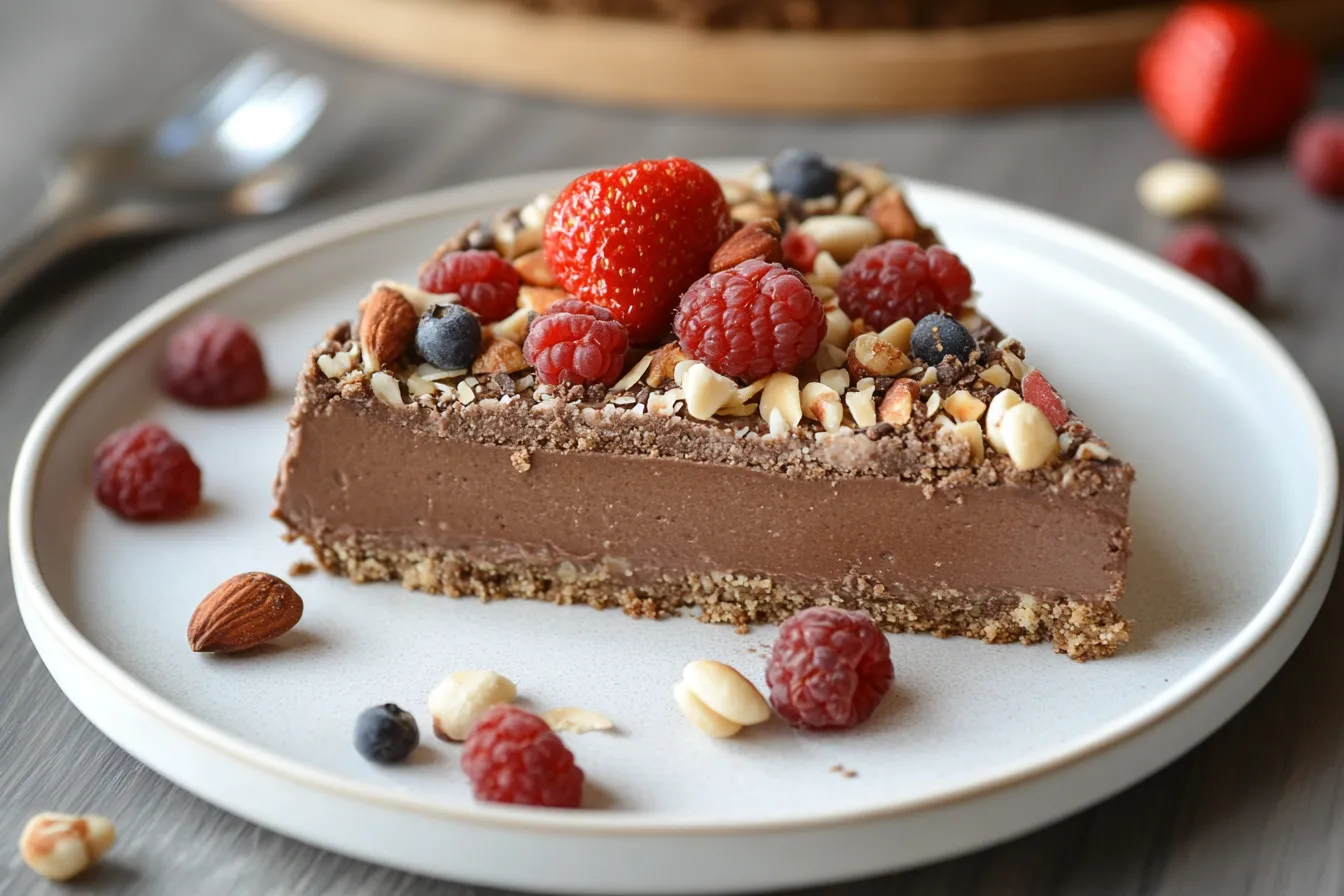Is Cheesecake Healthier Than Other Desserts? Discover Its Nutritional Profile, Comparisons, and Healthier Alternatives
Cheesecake is a beloved dessert enjoyed by many, but is cheesecake healthier than other desserts? While desserts bring joy to meals and satisfy sweet cravings, they often come with concerns regarding high sugar and fat content, which can impact overall health. Among various dessert options, cheesecake stands out as a popular and indulgent choice, known for its rich, creamy texture and delicious flavor. But does it offer any health advantages over other sweet treats?
This guide takes a closer look at the nutritional profile of cheesecake, compares it to popular dessert alternatives, and offers practical tips for making cheesecake a healthier treat without sacrificing taste.
Table of content

What Makes Cheesecake Unique?
Ingredients That Define Cheesecake
Cheesecake is a well-loved dessert made with a combination of essential ingredients that give it a unique texture and taste. The primary ingredients include cream cheese, sugar, eggs, and a crust typically made from crushed graham crackers or digestive biscuits. The inclusion of cream cheese provides cheesecake with its signature dense, smooth, and velvety consistency, making it distinct from other types of cakes and pastries. The sugar and eggs contribute to its sweetness and structure, while the crust offers a contrasting crunchy texture that complements the creamy filling.
A Dessert with a Global History
Cheesecake has a long and fascinating history that dates back to ancient Greece, where it was initially made using simple ingredients like cheese, honey, and wheat. Over time, the recipe evolved, spreading across different cultures and countries, leading to the creation of various regional variations. The famous New York-style cheesecake, for example, is rich and dense, made with heavy cream and baked to perfection. In contrast, Japanese cheesecake is known for its fluffy, soufflé-like texture, achieved by incorporating whipped egg whites. No-bake cheesecake, another variation, relies on refrigeration to set, often containing more sugar and whipped cream than its baked counterparts. This historical and cultural evolution has contributed to cheesecake’s status as a luxurious and beloved dessert worldwide.
For more about the history of cheesecake, visit BBC Good Food.
Nutritional Insights: Is Cheesecake Healthier?
What’s in a Slice of Cheesecake?
A standard slice of classic cheesecake, which typically weighs around 100 grams, contains:
- Calories: Approximately 350 kcal, making it a calorie-dense dessert.
- Fats: Around 25 grams, primarily consisting of saturated fats, which contribute to its creamy texture.
- Proteins: Roughly 6 grams, providing some level of satiety.
- Carbohydrates: Approximately 25 grams, mainly derived from sugar and the crust.
Compared to other desserts, cheesecake provides a balance of fats and proteins, making it more filling and satisfying than sugar-heavy treats that primarily contain carbohydrates. The protein and fat content may help reduce hunger for a longer duration, but the high saturated fat and calorie density mean that it should be consumed in moderation.
How Different Cheesecake Types Vary
Different types of cheesecakes have varying nutritional profiles based on their ingredients and preparation methods:
- New York Cheesecake: This variety is known for being rich, creamy, and high in calories due to the inclusion of heavy cream and a significant amount of cream cheese.
- Japanese Cheesecake: This lighter version contains less cream cheese and incorporates whipped egg whites, resulting in a lower-calorie, airy texture.
- No-Bake Cheesecake: This type does not require baking, but it often includes additional sugar and whipped cream, increasing its carbohydrate and fat content.
For those seeking a healthier cheesecake alternative, Lemon-Blueberry Cheesecake Chia Pudding is a great option, offering a nutritious twist on traditional cheesecake flavors.
For more insights on saturated fats and cholesterol, visit Mayo Clinic.
What Makes Cheesecake Unique?
Ingredients That Define Cheesecake
Cheesecake is a well-loved dessert made with a combination of essential ingredients that give it a unique texture and taste. The primary ingredients include cream cheese, sugar, eggs, and a crust typically made from crushed graham crackers or digestive biscuits. The inclusion of cream cheese provides cheesecake with its signature dense, smooth, and velvety consistency, making it distinct from other types of cakes and pastries. The sugar and eggs contribute to its sweetness and structure, while the crust offers a contrasting crunchy texture that complements the creamy filling.
A Dessert with a Global History
Cheesecake has a long and fascinating history that dates back to ancient Greece, where it was initially made using simple ingredients like cheese, honey, and wheat. Over time, the recipe evolved, spreading across different cultures and countries, leading to the creation of various regional variations. The famous New York-style cheesecake, for example, is rich and dense, made with heavy cream and baked to perfection. In contrast, Japanese cheesecake is known for its fluffy, soufflé-like texture, achieved by incorporating whipped egg whites. No-bake cheesecake, another variation, relies on refrigeration to set, often containing more sugar and whipped cream than its baked counterparts. This historical and cultural evolution has contributed to cheesecake’s status as a luxurious and beloved dessert worldwide.
For more about the history of cheesecake, visit BBC Good Food.
Is Cheesecake a Healthier Dessert?
Cheesecake can be considered a healthier dessert option in some cases because of its higher protein and fat content compared to other sugary desserts. The balance of macronutrients may provide a longer-lasting feeling of fullness. However, the high calorie and saturated fat content make it a treat best enjoyed in moderation. Choosing healthier variations, such as using Greek yogurt instead of cream cheese or opting for natural sweeteners, can improve its nutritional profile.
Is Cheesecake Healthier Than Chocolate Cake?
When comparing cheesecake to chocolate cake, the following factors stand out:
- Calories: Chocolate cake generally contains more calories per slice, often around 400 kcal, while cheesecake averages around 350 kcal.
- Sugars: Chocolate cake tends to have higher sugar content, typically about 35 grams per serving, whereas cheesecake contains around 25 grams.
- Fats: Cheesecake contains more fat, but this fat contributes to a greater feeling of satiety.
Overall, while cheesecake has more fat, it tends to be lower in sugar compared to chocolate cake, making it a relatively balanced indulgence when consumed mindfully.
What Is the Most Unhealthiest Dessert?
Some of the unhealthiest desserts include:
- Deep-Fried Desserts: Items like deep-fried ice cream or deep-fried cheesecake are high in saturated fats and calories.
- Store-Bought Pastries: Many packaged cakes and pastries contain high amounts of refined sugar, unhealthy fats, and preservatives.
- Sugary Drinks and Milkshakes: These beverages can contain more sugar than an entire meal and provide little to no nutritional benefits.
Cheesecake, although rich, can be a healthier choice compared to highly processed, deep-fried, or sugar-laden desserts.
Is Cheesecake More Fattening Than Ice Cream?
Cheesecake is typically more calorie-dense than ice cream due to its high fat and calorie content per slice. Here’s a comparison:
- Calories: A slice of cheesecake (~100g) contains approximately 350 kcal, whereas a scoop of vanilla ice cream (~70g) has around 145 kcal.
- Fats: Cheesecake has a higher fat content, particularly saturated fat, while ice cream has more sugar.
- Protein: Cheesecake provides more protein per serving than ice cream, making it slightly more filling.
While cheesecake is more calorie-dense, it also provides more protein and fat, which can help with satiety. Ice cream, however, may contain more added sugars, making it a less balanced dessert choice.

Final Verdict: Is Cheesecake Healthier Than Other Desserts?
Cheesecake offers unique benefits, including higher protein and fat content, which contribute to greater satiety. However, its high calorie and saturated fat levels mean it should be enjoyed in moderation. By using healthier ingredient swaps and practicing portion control, cheesecake can be made into a more balanced indulgence.
For more healthy dessert options, check out Peanut Butter & Chocolate Chickpea Blondies and No-Sugar-Added Vegan Oatmeal Cookies.
Other articles: nutrientsrecipes.com

